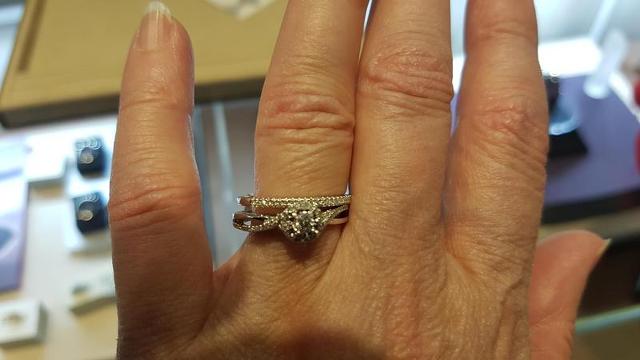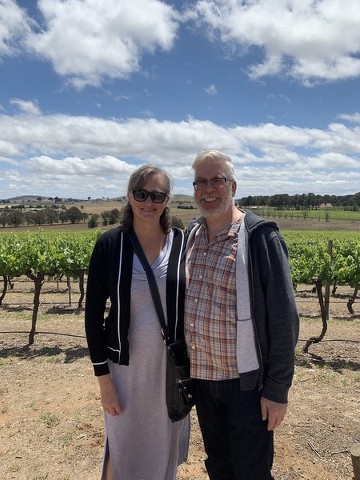Preached at St. Margaret of Scotland Anglican Church, Diocese of Toronto, Barrie, Ontario. The Second Sunday of Easter, 28 April, 2019
Acts 5: 27-32; Psalm 150; Revelation 1: 4-8; John 20: 19-31
19 When it was evening on that day, the first day of the week, and the doors of the house where the disciples had met were locked for fear of the Jews, Jesus came and stood among them and said, "Peace be with you."
Today I want to talk about a particular aspect of our liturgy, the Sharing of the Peace, and about how that action in the middle of our service becomes hugely meaningful in light of today’s gospel reading from St. John. The risen Jesus appearing to his disciples, his threefold greeting “Peace be with you”, and the grace, forgiveness, and affirmation inherent in this greeting to these disciples who abandoned and betrayed Jesus before his death, all help us understand the special greeting that we exchange right in the middle of our Sunday service.
The Peace as an action, that moment when we move around and deliberately greet one another, is is a relatively new in Anglican worship. Some of you will remember that in the old Book of Common Prayer, there was a formal exchange between the priest and people just after the Prayer of Consecration:
The peace of the Lord be always with you.
People. And also with you. (p. 83)
Then with the Book of Alternative Services, the Peace moved to a place just after the confession and absolution. The words were the same as the BCP, but the BAS liturgy encouraged the people to “greet one another in the name of the Lord”.
It seems like The Peace is different in every parish. I’ve been in grand stone cathedrals where people sat as far apart from one another as they could, and exchanged brief glances and slight nods at one another during the Peace. Other parishes, like us at St. Margaret’s, are much more exuberant. People shake hands, hug, chat, seek out and welcome strangers, and it often takes a long time to call you back to order.
Not everyone shares the Peace in the same way. It’s one of those moments where our extrovert and introvert personalities are clearly on display, and as Father Simon likes to say, that’s perfectly fine. It’s alright to be a hugger (if people want to be hugged) or to stay in your pew and smile at others. The important thing is what we _say_ during the Peace.
Most of us say something like “God’s peace be with you” or “The peace of Christ” or just “peace”. Why do we use these words rather than a phrase that we might say if we greeted one another on the street, like “It’s nice to see you” or “how are you” or “how’s it going?”
Surely the answer to this question lies in the link between our liturgy and today’s gospel. What happens between the risen Christ and his disciples in that room makes it possible for us to say these words to one another. The fact that Christ says “peace be with you” to these people huddled behind a locked door allows them to let go of their fear and guilt and start the process of becoming the church. Christ’s saying “peace be with you” gives the disciples, and us, a way to imagine our own identities as church, as an Easter people. So the words “Peace be with you” in our greetings during the liturgy are important because peace is Christ’s great gift to the disciples in John 20, and to us today.
Let’s take a moment to remember the context of today’s gospel, to better see how powerful Jesus’ words of peace are to the disciples. In the first half of John 20, Mary Magdalene has seen Jesus in the garden, outside his tomb, and has told the disciples about her meeting him. We would think that they might have been filled with hope and joy by Mary’s report, and that they might be out searching for the risen Christ, but to the contrary they are barricaded behind locked doors. We are told that the disciples are fearful for their lives; certainly the detail that it is nighttime, when they would be most fearful is relevant.
So in the middle of the night, into their fear, shock, grief, and mourning, comes Jesus. He passes through the locked door as if to say that their fear and self-protectiveness don’t matter. He comes to confirm the words of Mary Magdalene and the hope which the disciples don’t seem to allow themselves to believe. He comes despite his own death, in his physical body with the wounds still on him, and he says “Peace be with you” and when he says these words, he says let go of your fear, for fear and grief and mourning and the dark of night have lost their power over me and over you.
So the first thing we can say about our sharing of the peace is that our action in the liturgy takes its meaning because of the resurrection of Christ. We share the Peace in a place where there may be memories and even ghosts for some of us. We can look around this church and say … there’s where Ron sat and ran the overhead presentation, and there’s where Bert sat, and Kay, and Randy … but when we say “Peace be with you”, we are reminding one anther that we are an Easter people, following the same Christ who rose from the grave and who undid the power of death. We are reminding ourselves to let go of our fears, of our concerns for the seemingly unforgiving power of age and mortality over our bodies, and to remind one another that as the Lord is risen, so those we love and mourn are safe in his keeping, and that we will see them again on the day of resurrection. By saying “Peace be with you”, we say, “May life, and hope, and joy, and promise, be with you”.
The second thing that connects our sharing of the Peace with the words of Jesus in the locked room is the context of forgiveness and reconciliation. We know from the passion stories of the other gospels that the disciples have let Jesus down in many ways. They could not stay awake in the garden when he asked them to keep watch with him, they deserted him when he was arrested, and Peter, who swore that he would never abandon Jesus, denied knowing Jesus three times. Presumably the disciples, particularly Peter, are feeling guilt and remorse as well as grief, and yet when Jesus comes he does not accuse or reproach them. His words “Peace be with you” are words of forgiveness - he gives the disciples peace from guilt and self-loathing.
Thus, the second thing we can say about our sharing of the peace is that it is connected to the church’s work of forgiveness and reconciliation. When Jesus says to the disciples, “If you forgive the sins of man, they are forgiven them if you retain the sins of any, they are retained” (Jn 20:23) he is also speaking to us. Our act of sharing the Peace comes after the confession and absolution. The knowledge that we as imperfect people are forgiven our sins allows us to face on another and to remind us that we all enjoy that same grace and love. All of the frictions that are part of church life - our ways of stepping on one another’s toes, saying unkind or impatient words, our foolish rivalries over our roles and ministries - these all must be set aside if we are truly to receive the Peace that Christ gives us from our own sin and guilt. By saying “Peace be with you”, we say “I’m sorry for what I’ve done, and I forgive you for what you have done.”
The third thing that connects our sharing of the Peace with the words of Jesus in the locked room is the context of doubt and imperfect belief. Thomas is the one disciple who cannot believe, despite the testimony of Mary Magdalene who saw Jesus in the garden and the disciples who saw him previously in the locked room. He has essentially called his friends liars, or at best, deluded. And so when Jesus says “Peace be with you” the third time, it seems directed specifically to Thomas and to his scepticism. His words “Peace be with you” are again words of forgiveness, but also words of hope and encouragement, as if to say, “Thomas, you will believe”, and they lead to Thomas making the most fulsome profession of faith of anyone in the gospels, “My Lord and my God!” (Jn 20:28).
Thus, the third thing we can say about our sharing of the peace is that it is connected to our doubts as much as to our faith. We may call ourselves a people of faith, but our faith is not uniform. Not all of us may believe as readily, or as completely, as do those around us, and again, as Simon would say, “that’s ok”. When we say “Peace be with you”, we are saying that it’s ok to be where you are in you own journey of faith. The exchange of “Peace be with you” removes our temptation to apply some sort of faith test and to want to think that we have to be some sort of super-believer. The words “Peace be with you” gives those who need it permission to be a Thomas. For those who are doubtful, to hear and receive the words “Peace be with you” is to be told that it’s ok to be doubtful, that lack of faith is not a sin, but rather is merely human. At the same time, the words “Peace be with you” opens the possibility that the work of the Holy Spirit will bring a person to also say, with Thomas, “my Lord and my God”, and for the doubtful this may be exactly the sort of encouragement they one day need.
There are of course other scriptural lenses through which we can view and better understand this important part of the liturgy. Jesus’ breathing on the disciples and his words “Receive the holy spirit”remind us of the vision of the valley of the dry bones in Ezekiel (37:1-14), or of the story of Pentecost (Acts 2), which speak to the Holy Spirit’s work of revival and unification which make the church possible. Sharing the peace can draw us out of isolation and into community, it brings us together regardless of age or race or class, and makes us one. But in the light of John 20, we see the Sharing of the Peace as what it is, a sign of grace from the God who loves us, forgives us, gathers us together and empowers us to go on - and these are things that we can do for one another when we turn to them, extend a hand, and say “Peace be with you”.



